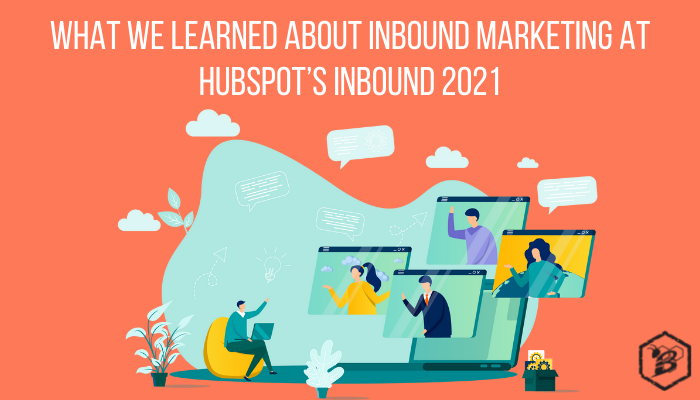
What We Learned About Inbound Marketing at INBOUND 2021
Photo from HIVE Digital Strategy
Originally Posted On: https://blog.hivedigitalstrategy.com/what-we-learned-about-inbound-marketing-at-inbound-2021
The 2021 INBOUND conference took place last week and we were busy absorbing knowledge from inbound marketing experts (along with sales gurus, customer service stars, and other impressive speakers). The annual conference is hosted by HubSpot and brings together some of the biggest names in the inbound marketing industry. There were dozens of presentations, and everyone on our team was in attendance. With a diverse range of skills and interests, we covered a lot of ground at INBOUND, and we want to share some of our big takeaways.
Use the links below to jump to the topic section you’re interested in or read at your own pace.
Content Marketing & Oprah | Customer-Centric Marketing, Buyer Personas, and Recycling Content
Lead Generation with Google and Social vs. Paid Advertising | HubSpot Payments | Cyclical Lead Nurturing
Maintaining a Customer Focus | Creativity and Behavioral Science | SEO and Google Preferences
Content vs. Community and Email Marketing
Content Marketing & Oprah
Dustin Brackett, CEO at HIVE Digital Strategy
 This year was my sixth INBOUND and every year I am filled with excitement, energy, and focus while also being overwhelmed with the amount of information, speakers, and ideas. It truly is a gathering of the minds. It’s so much fun to see the trends popup (RevOps was a huge one this year) while also seeing the things that experts in our industry have been talking about for years now.
This year was my sixth INBOUND and every year I am filled with excitement, energy, and focus while also being overwhelmed with the amount of information, speakers, and ideas. It truly is a gathering of the minds. It’s so much fun to see the trends popup (RevOps was a huge one this year) while also seeing the things that experts in our industry have been talking about for years now.
This year, a couple speakers really stood out to me. Marcus Sheridan is one of my favorite speakers each year at INBOUND. He’s engaging, fun, and over-the-top animated. While I would much rather see Marcus in person, his actionable tips on becoming a trusted voice were impactful. He always does a great job of introducing a concept and then making it actionable.
Want to learn more about content marketing? Here are 10 tips to be effective
The other speaker that absolutely blew me away was Oprah Winfrey. I, as you could probably guess, was never a dedicated viewer of the Oprah show, but we all know what an extraordinary woman she is. I did not, however, grasp just how powerful, eloquent, and motivating she is. Her talk was about making decisions that support who you are, what you believe, and being unapologetic in doing so. She had every single person at HIVE absolutely glued to their screen and it is possible that at least one person on the team shed a tear or two (not mentioning any names, *cough* Yvonne). She was by far the most impactful speaker that I’ve ever seen at INBOUND (and that includes Michelle Obama, Gary Vaynerchuck, Jada Pinket-Smith, Brene Brown, John Cena, Deepak Chopra, and a host of others). I was absolutely blown away, and it’s not hard to see why she’s one of the most successful people in the world. I was ready to run through a brick wall after Oprah’s talk!
Customer-Centric Marketing, Buyer Personas, and Recycling Content
Yvonne Hall, Director of Client Success and Operations at HIVE Digital Strategy
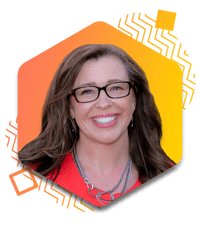 The consistent message I heard across all sessions is: know your audience (and speak to your audience). Personas are still KEY! There was a huge customer-centric focus from Dharmesh’s Spotlight talk reminding us to keep customers in the center of the flywheel and was heard throughout SEO sessions, RevOPs sessions, and of course in marketing implementation sessions.
The consistent message I heard across all sessions is: know your audience (and speak to your audience). Personas are still KEY! There was a huge customer-centric focus from Dharmesh’s Spotlight talk reminding us to keep customers in the center of the flywheel and was heard throughout SEO sessions, RevOPs sessions, and of course in marketing implementation sessions.
Here’s why buyer personas are still important for your business
Marcus Sheridan has been speaking to the importance of customer-centric marketing for years. His INBOUND session this year continued his They Ask You Answer model of listening to prospect’s questions and creating content around those questions, especially if no one else in your space is talking about the answer. Not only did he reiterate to share pricing on your website — yes, even for B2B companies — but also to compare your company to your competitors (without negativity). This is content that your prospects are looking for and the unbiased transparency of this content not only builds trust but will also organically attract buyers that are most aligned.
I also really enjoyed a tip from Tess Needham, who encouraged a way to recycle and optimize internal expertise to be used externally. She mentioned the expert knowledge that is shared on internal communication channels on hybrid and remote teams that can be pulled out for marketing content — blog posts, social media content, vlog ideas, FAQ content, and even pillar page content. This information can be shared in a way that you can attract and nurture leads interested in your expertise with these content pieces.
Lead Generation with Google and Social vs. Paid Advertising
Tim Monacella, Business Development Manager at HIVE Digital Strategy
 I gained a lot from INBOUND but two sessions stood out the most to me. The first one was about growing your business through lead value with Google. They emphasized the importance of connecting with your customer online. 46% of businesses stated that finding new leads was their biggest challenge. An additional challenge is demonstrating ROI for continual justification to run ads. The session then went into how to build a robust lead generation strategy that drives engagement:
I gained a lot from INBOUND but two sessions stood out the most to me. The first one was about growing your business through lead value with Google. They emphasized the importance of connecting with your customer online. 46% of businesses stated that finding new leads was their biggest challenge. An additional challenge is demonstrating ROI for continual justification to run ads. The session then went into how to build a robust lead generation strategy that drives engagement:
- Create messaging that speak to customers needs
- Use strong headlines with appropriate keywords
- Craft authentic copy with specific and direct CTA’s
- Tap into the power of Smart Bidding and ad extensions
The second session I found interesting covered LinkedIn organic vs. paid advertising. It was a debate on which tactic worked better. Ultimately, you need larger budgets to advertise on LinkedIn ($5k-$10k per month). You can advertise with smaller budgets but your sales cycle will likely be very long as a result. To get measurable results, you really have to spend at least $2k-$3k over a campaign.
The top mistakes for paid advertising are:
- Uncheck enable expanded audience when setting up ads
- Do not Auto Bid & switch to a manual CPC instead
- Stay within a 20,000 – 80,000 audience size range
When trying for organic reach for your company, you always start out with personal outreach to a prospect to gain interest. The next step comes after your lead has shown some interest when you ask them to follow your company page for additional content. Push valuable industry or company-specific content out from your company page, but don’t forget to be sharing valuable content on your personal LinkedIn as well.
Interested in Pay-Per-Click best practices? Here are 6 Pay-Per-Click Management Myths to Avoid
HubSpot Payments
Brian Harte, Lead Website Developer at HIVE Digital Strategy
 My favorite part of INBOUND 2021 was learning about the new products and features from HubSpot. The HubSpot Payments feature in particular seems like a game changer. As a web developer with a design background I was hoping for more content directly related to production, but there were still valuable parts of the presentations that I found useful. I confess that my mind wandered in some of the sessions that got into the weeds of sales and marketing strategy. I also enjoyed hearing the diverse perspectives of the attendees and the celebrity cameos, but wasn’t able to glean much practical information from these sessions. The discussions I found most helpful were those that discussed email subject line optimization, social media video production, and SEO strategies.
My favorite part of INBOUND 2021 was learning about the new products and features from HubSpot. The HubSpot Payments feature in particular seems like a game changer. As a web developer with a design background I was hoping for more content directly related to production, but there were still valuable parts of the presentations that I found useful. I confess that my mind wandered in some of the sessions that got into the weeds of sales and marketing strategy. I also enjoyed hearing the diverse perspectives of the attendees and the celebrity cameos, but wasn’t able to glean much practical information from these sessions. The discussions I found most helpful were those that discussed email subject line optimization, social media video production, and SEO strategies.
Cyclical Lead Nurturing
Melanie Locke, Lead Content Marketing Strategist at HIVE Digital Strategy
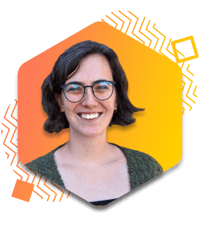 One of my favorite aspects of conferences like INBOUND is the opportunity to learn from other experts in the industry. While I’m fortunate to work with a number of impressive experts within HIVE, there’s always knowledge to be gained from different perspectives. In Mike Tatum’s presentation about engaging inbound leads with a continuous cycle of lead nurturing workflows, I was able to dive into the world of workflows with a guide who’s had significant success as a demand generation expert.
One of my favorite aspects of conferences like INBOUND is the opportunity to learn from other experts in the industry. While I’m fortunate to work with a number of impressive experts within HIVE, there’s always knowledge to be gained from different perspectives. In Mike Tatum’s presentation about engaging inbound leads with a continuous cycle of lead nurturing workflows, I was able to dive into the world of workflows with a guide who’s had significant success as a demand generation expert.
Through his talk, I learned about two different types of lead nurturing workflows: campaign-based and re-engagement.
Campaign workflows are typically attached to a specific piece of content or a specific topic and are triggered by actions like a form fill or ad click. The purpose of these workflows is to move your lead a little farther down your sales funnel. As they show interest in a specific topic, you lean into that interest and provide related content to answer any questions they may have. This can continue until they reach the final stage of your workflow (engaging with a content piece lower in your funnel and moving into that associated workflow or that lead disengages and stops showing interest or engagement in your offers).
This is where a re-engagement workflow comes into play. A re-engagement workflow aims to reconnect with a lead at the same funnel stage where they first expressed interest. As a marketer, this was mind-blowing. So often, we’re trying to move leads down the funnel with little awareness of whether our lead wants to be moved! A re-engagement campaign offers similar or related perspectives on whatever content or topic a lead first expresses interest in so that they can continue to engage with your company without the external pressure pushing them towards a decision they’re not ready for. And once they’re ready, they’ll know you as the expert to talk to.
Lead generation and workflows play an important role in how you use marketing automation to support your inbound marketing efforts.
Maintaining a Customer Focus
Syd Harris, Client Success Manager at HIVE Digital Strategy
 My biggest takeaway from INBOUND 2021 was similar whether the presentation was about Community Inclusion, Brand Awareness, or ABM Strategy. The message was consistent: The focus needs to be on the customer.
My biggest takeaway from INBOUND 2021 was similar whether the presentation was about Community Inclusion, Brand Awareness, or ABM Strategy. The message was consistent: The focus needs to be on the customer.
The future of any kind of service lies in how well we can interpret customer-focused data and how well we can fill their needs. Particularly in this digital era, it is imperative to create and develop technologies that address specific needs and problems that customers are having.
This customer-centric philosophy for products and services, means that marketing strategy must also be in line with the rest of a company’s identity. Effective customer-centric marketing must not only speak directly to the customer’s needs, it must also educate the customer and guide them towards becoming smarter and ultimately better at their job.
In her Customer-Centric Content presentation, Tess Needham talks about a “Love Story” between content marketing and customer success. The idea behind this love story is the seamless transition between a prospect becoming a customer and staying a customer. Any kind of interaction a customer has with your company should be focused on making it as pleasant as possible to create trust and loyalty. In B2B, it’s not just about your customers, but also about your customers’ customers.
Tess Needham touched on a few key points that will make for a better CX (Customer Experience):
- Get to know each other
- Align goals and metrics
- Hear what your customer is saying
- Be the voice of the customer
- Trace the customer journey
- Know your personas
- Be data-driven
- Tweak and measure
- Ask for contribution
- Seek diversity
- Share knowledge
- Provide problem-solving resources
- Implement a review process
Creativity and Behavioral Science
Erin Wiggers, Website Developer at HIVE Digital Strategy
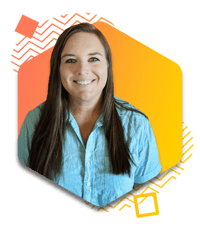 Two of my favorite INBOUND sessions were Creativity Thrives in Constraint and Using Behavioral Science to Improve Customer Success. Though at first glance they are seemingly unrelated, I think taken together the key points provide a powerful blueprint for approaching UX design.
Two of my favorite INBOUND sessions were Creativity Thrives in Constraint and Using Behavioral Science to Improve Customer Success. Though at first glance they are seemingly unrelated, I think taken together the key points provide a powerful blueprint for approaching UX design.
Constraining creativity may seem counterintuitive because in theory, we want to be open to any possibilities or new ideas. However in practice, there are logical boundaries to your ideas that will be most effective. These constraints can actually be used to your advantage by providing your creative brain with guardrails. To illustrate, you probably have 1-2 seconds to capture a user’s attention when they land on your website, so your creative efforts are best spent trying to grab and keep that attention.
This is where behavioral science can take your ability to create effective marketing content to the next level. Every person is subject to their cognitive biases, whether conscious or subconscious. For example, a person is more likely to read content if there is an image of a person on the screen looking at that content. Continuing our illustration, now we know that to grab the user’s attention we could use a specific type of imagery showing people looking at our content and test whether that change increases our actual user’s time spent on a page or associated links clicked.
The common thread in these two sessions was that understanding how your brain works can give you a significant advantage in creative marketing. Taken together, I learned that when you use data to create guardrails, you can unlock your brain’s creative potential. I plan on incorporating this framework into my creative problem solving from now on.
Want to learn more about cognitive biases and how they impact your marketing effectiveness? Let’s talk about Psychology & Inbound Marketing.
SEO and Google Preferences
Hunter Schoepflin, Growth Strategist at HIVE Digital Strategy
 INBOUND 2021 had many interesting presentations. I was particularly interested in the culmination of ideas surrounding the subject of SEO — how it has evolved and where it’s going. The two talks that stood out to me the most were Killer SEO Strategies Through Product Design Methodology and SEO, Leadership, and Career Building with Kevin Indig.
INBOUND 2021 had many interesting presentations. I was particularly interested in the culmination of ideas surrounding the subject of SEO — how it has evolved and where it’s going. The two talks that stood out to me the most were Killer SEO Strategies Through Product Design Methodology and SEO, Leadership, and Career Building with Kevin Indig.
Since 2013 Google has made a number of changes to the way SEO impacts search results. The search engine has transitioned from keywords and phrases and now has the ability to read between the lines, interpreting semantic search terms and more holistic content in order to populate more relevant answers to questions.
Think of SEO as a Strings-to-Things approach. Google is looking at the main topics and categories and determining what is connected to those main categories. The search engine is keeping consumer intent in mind by understanding whether content is informational, navigational, or transactional.
Advertisers primary focus should be to create high quality content that answers users queries with focused, authoritative, and expert information. It is helpful to use the acronym EAT. What is EAT? Search engines consider three things when crawling website content:
-
Expertise
- Is the creator of the content on this page an expert on the topic? Do they have other pieces of content that support their case for being an expert? What is their credibility and how is it established?
-
Authority
- People know you, know your background, and look to you as a leader in your industry?
-
Trust
- What is your website score? Are you trustworthy? Do you have backlinks to your website?
Search engines are smart. Therefore, it is essential to keep the user’s needs and pain points at the center of your content, not the keywords. Provide trusted content that answers people’s questions and problems. The faster the user experience to provide a relevant answer, the better your page performs.
How do you know what users need? You create customer marketing personas and use search need states as a means to map and understand the needs, behaviors, and intents of consumers searching for a product or service. Why do search-need-states work? No one lies to Google.
Now that you have an idea of some SEO strategies moving forward, it’s time for you to create content. But how does one go about doing that with best practices in mind?
The first step is to pick a single phrase and focus on the problem that is being solved. This helps to keep user intent in mind. Google is rewriting titles with the new updates, which can lead to fluctuations in data. Advertisers should aim to add your brand to every title, because if you don’t Google will add it automatically.
Remember, Google and other search engines are smart. Keep the user intent front of mind as you develop content aimed towards helping website visitors. And update your SEO with the basics to ensure that you’re not getting dinged online.
Content vs. Community and Email Marketing
Jill Schneider, Marketing Specialist at HIVE Digital Strategy
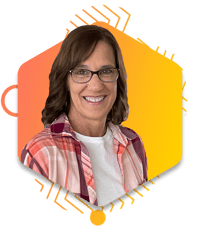 Throughout INBOUND 2021, the overarching message of the importance of community commands our full attention. One of the foundations of inbound marketing is content. We can’t have community without content, and without community, we wouldn’t have content. So how do we blend them together?
Throughout INBOUND 2021, the overarching message of the importance of community commands our full attention. One of the foundations of inbound marketing is content. We can’t have community without content, and without community, we wouldn’t have content. So how do we blend them together?
Kristen LaFrance, Director of Community at Repeat, and Con Citillo, Head of Customer Experience at Carro, shared their experiences in their breakout session Debate: Should Brands Focus on Content or Community First? The main takeaways were:
- Community is part content, and every conversation within your community is of itself content.
- Knowing your customers is crucial. A lack of understanding and empathy will get in the way of connecting with them.
- To build a strong community, you need to create content your customers will find valuable, not just topics you think are important.
- Avoid the “ïf you build it, they will come” mentality. Just creating isn’t enough. You have to get it in front of the right people in the right way.
- Not everyone consumes content in the same way. It’s important to deliver it in the formats they want.
We shouldn’t think of it as content OR community. Instead, think of it as: is your content FOR your community or is it community FOR content, and how are they helping each other.
I also found a lot of good tips for email marketing in Jay Schwedleson‘s Email Myths Busted! What’s Really Working Now session. He shared these subject line tips to use to increase open rates:
- Suspense (Three dots …) – Subject: And the winner is…
-
Bookend Emojis – Subject:
 Huge sale on Gatorade! Today only
Huge sale on Gatorade! Today only 
- Fake Mistake – Subject: Oops, you almost scrolled past this! Let us spoil you… Check out our summer savings.
- Lists – Subject: 6 New ways to increase email open rates
- Perceived Scarcity – Subject: Limited stock! Get your Gatorade before it’s gone! or Subject: Back in stock! Fill your fridge with Gatorade.
He warned that vague subject lines are annoying and quickly find their way to the trash folder. Jay also pointed out that these tactics might not work six months down the road, so don’t wait to try his tips.
Whew, that was a lot of info! We won’t keep you any longer, and we’ll leave you with two final links to explore: bookmark this link to stay up-to-date with INBOUND 2022 (we’ll see you there!) and use the button below to keep learning about inbound marketing and see how it compares to outbound.
